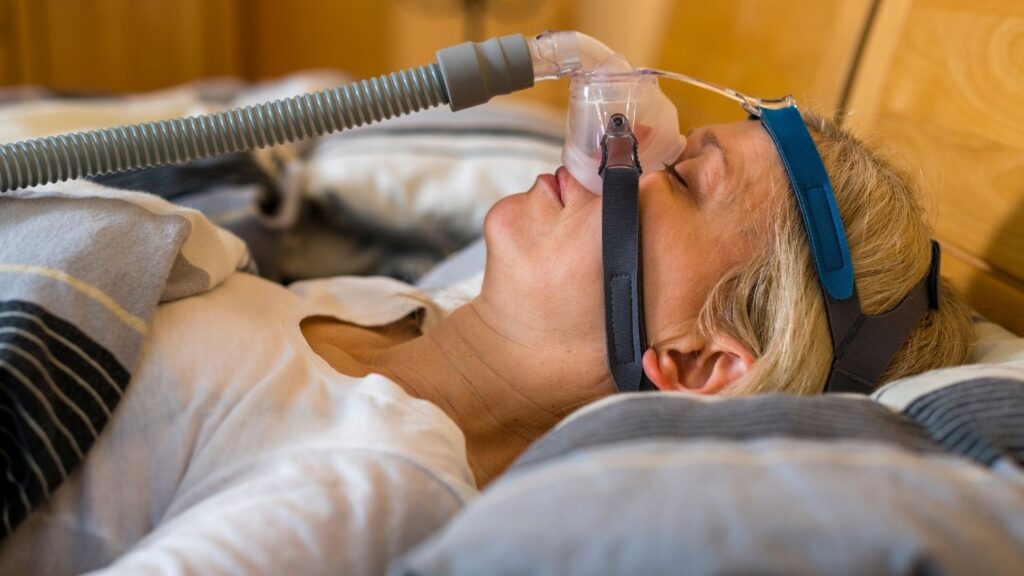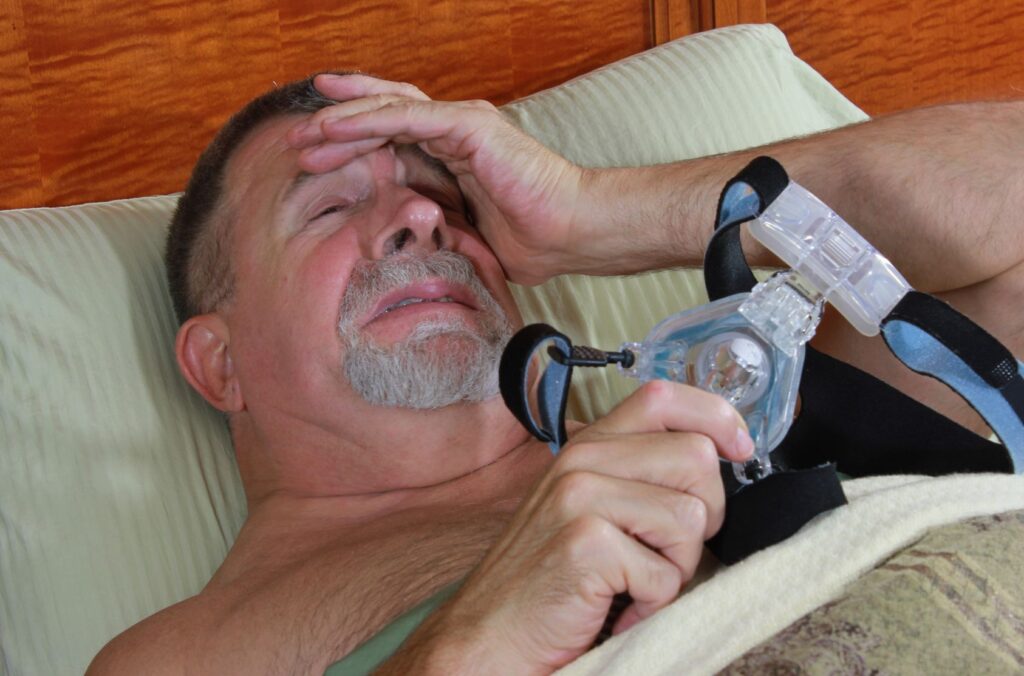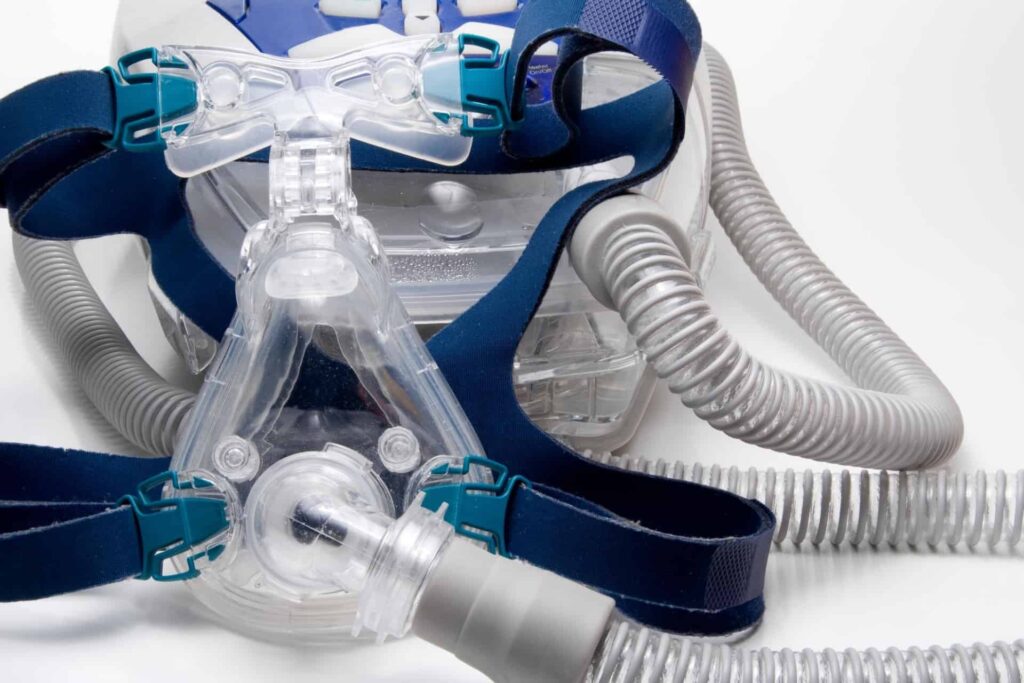Consistent usage of your CPAP machine is necessary to reap the full benefits of treatment for sleep apnea, despite the fact that you may experience some unpleasant side effects at first. Therefore, the long-term success of treating your sleep apnea depends on identifying and resolving these issues as soon as possible.
The goal of this article is to help you recognise and cope with the negative effects of cpap masks so that you may get the most out of this life-changing treatment for your sleep apnea.
- Acne, blisters, and red marks when using a CPAP mask
The skin around your cheeks and nose may become irritated if you use a CPAP mask. There are often three main causes of bumps, rashes, and redness:

- Oils from Your Face Congealing Below the Mask’s Padding: If your CPAP mask is causing skin irritation, you should first examine your cleaning procedures. A buildup of perspiration, facial oils, and saliva over the course of the night can irritate your skin and lead to redness and irritation if your mask isn’t cleaned.
- Overtightened headgear: In order to achieve a good seal sometimes you overtighten, it may be time to change your cushions. It could also mean that you need a larger or smaller cushion. Because the tightness of the mask can cause blisters and redness on your face.
- Mask Material Allergy: Latex allergies may have contributed to CPAP skin irritation in the past, but nowadays, silicone is used in most CPAP masks. Rare as they are, silicone allergies may exist, so you may need to try a gel or cloth mask instead.
Is there a way I can keep myself from getting the red marks?
Over-tightening your CPAP mask can leave red markings, and it can also leave you with nose sores and other skin irritations. Tightening your mask too much can cause air leakage, so don’t do it. Make fine adjustments to the headpiece until the mask fits snugly yet comfortably, making sure not to overtighten it. You may improve the quality of your seal by cleaning your mask cushion, nasal cushions, and nasal prongs every day.
The addition of mask strap pads, a cushioned covering for the headgear straps, might be a nice touch to your CPAP setup if you’re confident in the fit of your mask, haven’t needed to replace it in a while, and clean it regularly.
It’s frustrating to wake up to red stains on your face from your CPAP mask, but luckily, there are a number of products on the market made specifically to treat and prevent these marks.
- Nasal Mask Liners
- Cheek Cushion
- Full Face Mask Liners
- Gel Pad
Why is it that I keep getting zits on my nose?
In certain people, especially those with oily or acne-prone skin, the buildup of facial oils under a mask might cause outbreaks along the area where the mask was worn. This reaction can be reduced by cleaning your face every night before putting on the mask and by wiping the mask every morning.
You may try a nasal pillow mask instead, as it will have less of an impact on your skin if you still break out while using it. If you find yourself breathing through your mouth when using a nasal pillow mask, a CPAP chin strap may help you transition to nasal breathing.
To prevent or at least minimise zits, we advise using the following to maintain a clean mask:
- mask cleansing wipes
- Unscented Mask Wipes
- Disinfectant
- Purdoux Aloe Vera and Cotton Travel CPAP Mask Wipes
Although rare, a silicone allergy could be the cause of your acne, therefore you may want to get tested for it by your doctor. If modifying your cleaning routine doesn’t help clear up the acne caused by your CPAP mask, using a gel or cotton mask may be the next best option.
Nose That is Hurting; Why is That so?

Sores inside the nostrils are a common adverse effect of using nasal pillows or prong devices that are too big or the wrong shape for your nose.
If you’re experiencing irritation in your nostrils, you may find relief by switching to a nasal mask with a cradle design, like the AirFit N30i. This mask’s curved nasal cradle design hugs the base of your nose rather than entering it. Additionally, the mucous membrane inside the nose can get painful due to the dry air from the CPAP machine. Though a heated humidifier is ideal for soothing irritable nasal passages, many people also find relief from dryness and irritation by applying moisturiser or coconut oil to their nasal passages during the day.
Vaseline or other lubricants may seem like a quick fix, but they can actually speed up the breakdown of your mask cushion, so resist the urge. Use with caution or avoid altogether because it can weaken the integrity of your seal and cause you to needlessly replace your gear.
It’s also a good idea to stay away from scented soaps, lanolin-based moisturisers, and oil-based moisturisers if you want to keep your seal intact.
Hurting Nose Bridge?
If the straps of your headgear are causing irritation, you may be wearing them too tightly. Overtightening your headgear can create discomfort, and it’s usually a sign that your mask is either too big, too old, or not the appropriate style for your needs if you’re doing it to prevent air leaks.
A different mask shape should be considered if nasal bridge discomfort persists after trying a variety of cushion sizes. With a nasal cradle option, like the DreamWear Nasal Mask, you won’t have to worry about any discomfort in the bridge of your nose.
To alleviate discomfort on the bridge of the nose, try a nasal pillow mask if a nasal cradle mask doesn’t work for you. Contact Air Liquide Healthcare to get a mask that come with a Fit Pack so you may try different cushion and nasal pillow sizes to discover the one that works best for you if you suspect that this is the issue.

